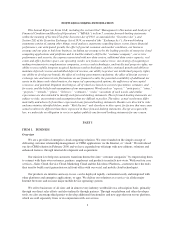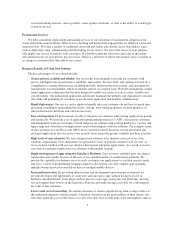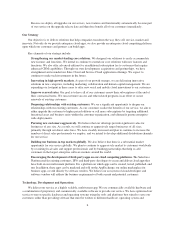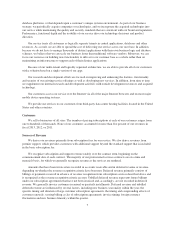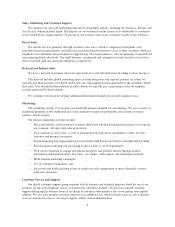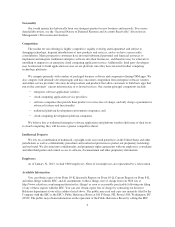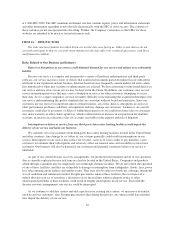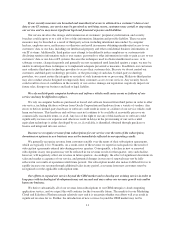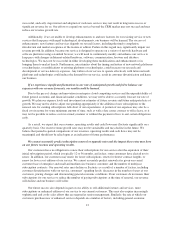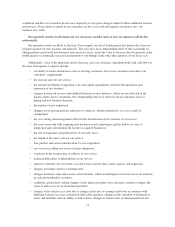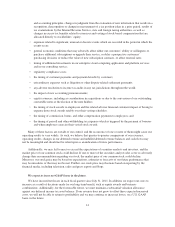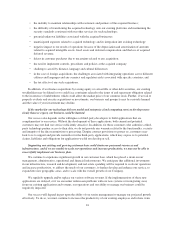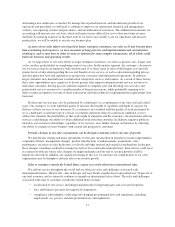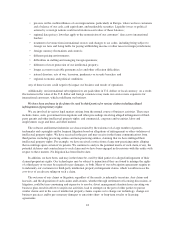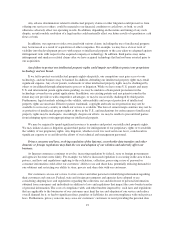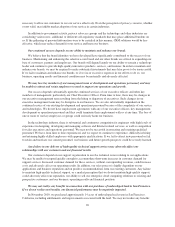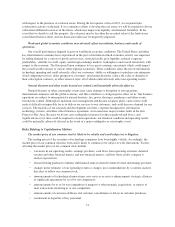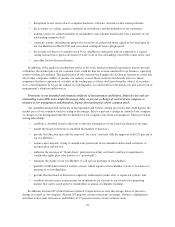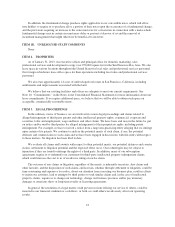Salesforce.com 2013 Annual Report Download - page 17
Download and view the complete annual report
Please find page 17 of the 2013 Salesforce.com annual report below. You can navigate through the pages in the report by either clicking on the pages listed below, or by using the keyword search tool below to find specific information within the annual report.conditions and that our customers do not react negatively to any price changes related to these additional features
and services. If our efforts to upsell to our customers are not successful and negative reaction occurs, our
business may suffer.
Our quarterly results can fluctuate and our stock price and the value of your investment could decline
substantially.
Our quarterly results are likely to fluctuate. For example, our fiscal fourth quarter has historically been our
strongest quarter for new business and renewals. The year-over-year compounding effect of this seasonality in
billing patterns and overall new business and renewal activity causes the value of invoices that we generate in the
fourth quarter to continually increase in proportion to our billings in the other three quarters of our fiscal year.
Additionally, some of the important factors that may cause our revenues, operating results and cash flows to
fluctuate from quarter to quarter include:
• our ability to retain and increase sales to existing customers, attract new customers and satisfy our
customers’ requirements;
• the renewal rates for our service;
• the amount and timing of operating costs and capital expenditures related to the operations and
expansion of our business;
• changes in deferred revenue and unbilled deferred revenue balances, which are not reflected in the
balance sheet, due to seasonality, the compounding effects of renewals, invoice duration, invoice
timing and new business linearity;
• the number of new employees;
• changes in our pricing policies and terms of contracts, whether initiated by us or as a result of
competition;
• the cost, timing and management effort for the introduction of new features to our service;
• the costs associated with acquiring new businesses and technologies and the follow-on costs of
integration and consolidating the results of acquired businesses;
• the rate of expansion and productivity of our sales force;
• the length of the sales cycle for our service;
• new product and service introductions by our competitors;
• our success in selling our service to large enterprises;
• variations in the revenue mix of editions of our service;
• technical difficulties or interruptions in our service;
• expenses related to our real estate, our office leases and our data center capacity and expansion;
• changes in foreign currency exchange rates;
• changes in interest rates and our mix of investments, which would impact our return on our investments
in cash and marketable securities;
• conditions, particularly sudden changes, in the financial markets have and may continue to impact the
value of and access to our investment portfolio;
• changes in the effective tax rates due to changes in the mix of earnings and losses in countries with
differing statutory tax rates, certain non-deductible expenses, changes in the valuation of deferred tax
assets and liabilities and our ability to utilize them, changes in federal, state or international tax laws
13


